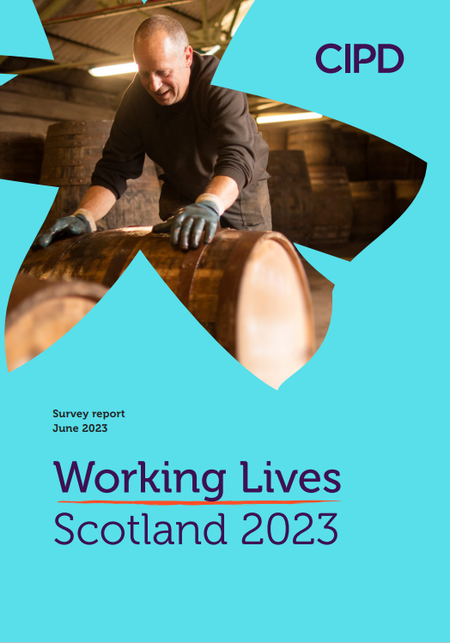The CIPD’s Working Live Scotland 2023 report, which has recently been published, provides a valuable insight into various aspects of Scottish people’s contemporary experiences of work, on topics as diverse as pay, job quality, employee voice, and the impact of the cost of living crisis. It is based on a subset of over 1000 Scottish workers from the UK Working Lives survey 2023, which was conducted early in 2023.
The focus here is on its findings in relation to one aspect of flexible working, WHERE people work, which provides support for the idea that home/hybrid working has continued at significantly higher levels than before the pandemic. However, there has been a drop, from 15% to 9%, of those who exclusively work from home, which suggests hybrid working, rather than full time homeworking, may become the long-term norm for many forms of work office-based work.
Interestingly, the survey reveals very significant differences, by income, in the use of home and hybrid working. Thus, while over 70% of workers on income less than £20,000 do not work from home at all, for those earning between £20-40,000, the equivalent number is 47%, and for those earning over £40,000 only 24% of workers do no homeworking at all. A similar income-based pattern is visible for hybrid working, with 22% of workers earning £20,00 or less doing it, 44% of workers earing £20-40,000 doing it, and 67% of workers earning £40,000 or above doing it. Thus, the higher people’s income, the more likely they are to undertake hybrid, or home-based working. This difference may be due to the type of jobs people do, at different income levels, with those on higher incomes in jobs which are compatible with home-based or hybrid working.
While hybrid and home-based working are now much more common than pre-pandemic, its important to recognise that for many workers, this may not be a way of working that is either possible, or desirable. Thus, the survey found that fully 33% of respondents were in jobs where they were unable to work from home at all. A further 11% of respondents also said that their preference was not to work from home, at all. Thus, almost 45% of respondents, or almost half, are either unable to work from home, or have a strong preference to not work from home. When discussing the topic of hybrid work, and its increased popularity, such findings should be recognised. For a significant proportion of the workforce, the character of their jobs mean this way of working is simply not possible.


